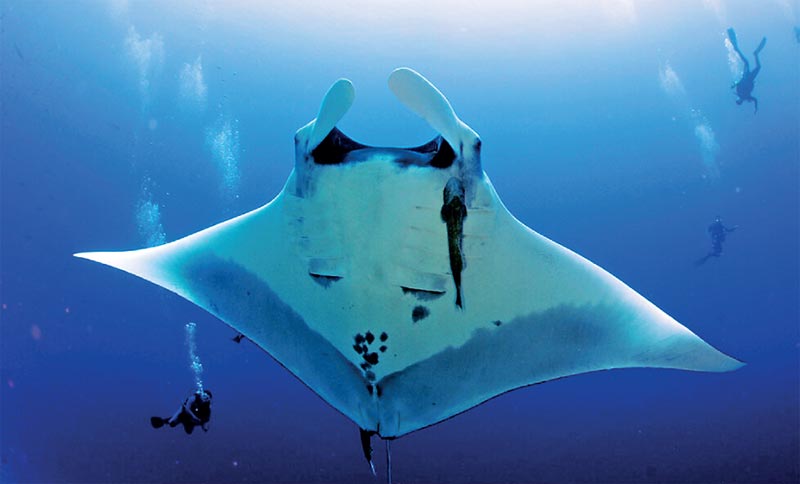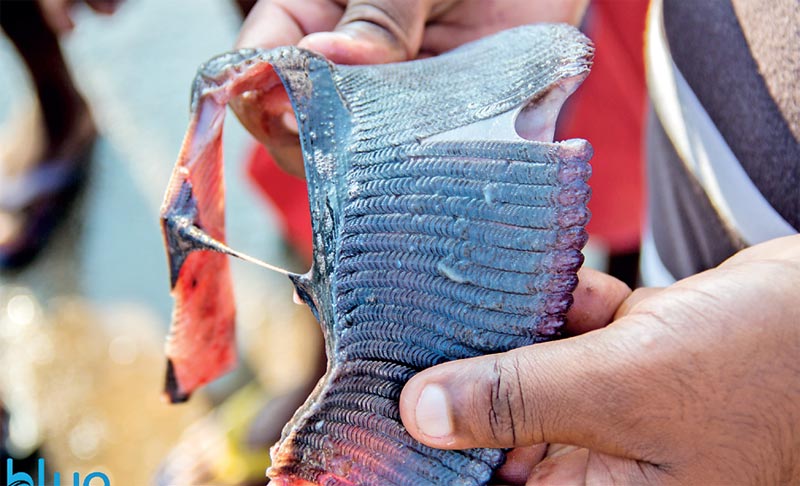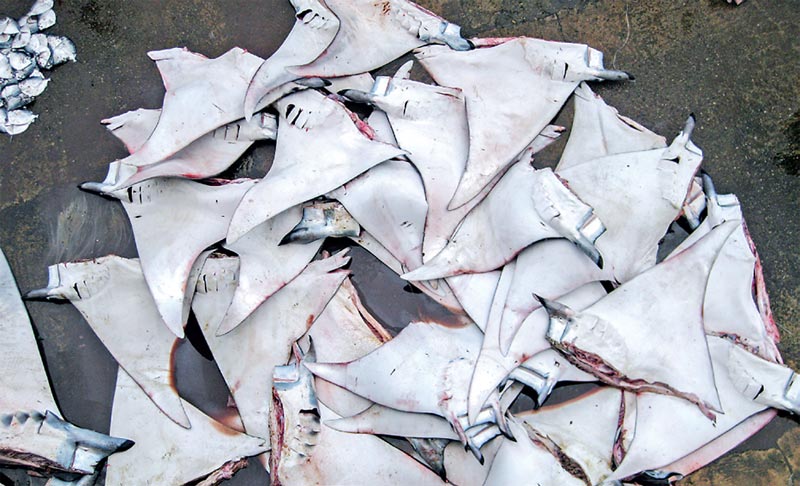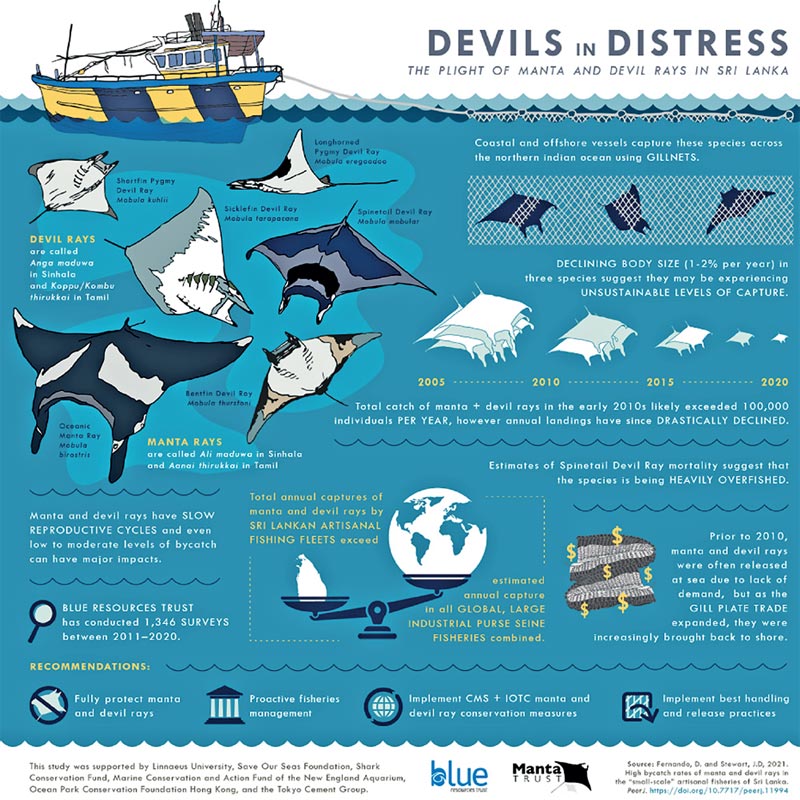Tuesday Jan 21, 2025
Tuesday Jan 21, 2025
Thursday, 25 November 2021 00:45 - - {{hitsCtrl.values.hits}}

A manta ray in the Maldives - Pic by Guy Stevens
By Daniel Fernando
|
Manta and gill plates
|
Manta and devils rays (“Ali maduwa” and “Anga Maduwa” in Sinhala and “Aanai thirukkai” and “Koppu/Kombu thirukkai” in Tamil) are some of the most iconic and charismatic fish in our ocean. And despite their name, they are completely harmless.
They use their devil-like “horns” on the top of their head (cephalic fins) to channel water into their mouth, which then passes over mesh-like structures called gill plates. These are specialised filters that capture the small, shrimp-like organisms called krill; their primary source of food.
Unfortunately, it is these gill plates that are prized by East Asian markets where they are marketed as a pseudo-remedy, claimed to cure a wide range of ailments. There is no scientific proof to support such claims and studies have shown that gill plates accumulate high proportions of heavy metals, including arsenic, making them harmful if consumed in large quantities.
Like other rays and their shark cousins, the manta and devil rays form part of a very unique group of fishes that have extremely slow life cycles. Manta rays, the largest of this family, are estimated to live for at least 40 years, take 15 years to reach maturity, and give birth to one single pup every three to seven years. This life cycle has far more in common with our fully protected elephants on land and is in stark contrast to other fish like tuna that spawn hundreds of thousands or millions of eggs multiple times a year. Slow life cycles mean that any external pressures result in rapid population declines.
With support from the Tokyo Cement Group, Linnaeus University, Save Our Seas Foundation, Shark Conservation Fund, Marine Conservation and Action Fund of the New England Aquarium, and Ocean Park Conservation Foundation Hong Kong, a nine-year study undertaken by Blue Resources Trust has revealed a very worrying trend for manta and devil rays in Sri Lanka.
They are being captured in extremely large numbers by both coastal and offshore fishing vessels, mostly in gillnets. This is a very indiscriminate form of fishing that results in the capture of not only the target species (tuna, sailfish, etc.) but any other marine animal that gets entangled in the net, including turtles, cetaceans, other sharks and rays, and of course the manta and devil rays.
At the 38 landing sites surveyed, we estimated that annual captures exceeded 100,000 individuals in the early 2010s. Considering there are over 50,000 registered vessels in the country and only 10 of 21 national harbours and 28 of 883 smaller landing sites were surveyed, the true number of manta and devil rays captured each year could be far higher. This makes Sri Lanka the largest known manta and devil ray fishery in the world.
Since 2010, we observed a decline in landings, despite the number of fishing vessels increasing. This, combined with the animals becoming slightly smaller in size, are clear indications of both overfishing and declining populations across the Indian Ocean. And finally, analysis of the most frequently captured species of this group suggests that it is being captured at rates far higher than its reproductive potential.
What all this means is that without immediate management intervention, the populations of manta and devil rays across the Indian Ocean may be on the brink of collapse.
Given these species are fully protected by the Convention on the Conservation of Migratory Species of Wild Animals (CMS) since 2014 (and Sri Lanka has been a Party to CMS since 1990), and they are considered a species that should be released if captured by either industrial and artisanal fleets under the Indian Ocean Tuna Commission (IOTC) from January 2022 (Sri Lanka is a member to IOTC since 1994), it is imperative that Sri Lanka take actions to protect these species. A combination of awareness campaigns, guidelines to encourage live release, and support to transition into more sustainable fishing techniques will be necessary.
Proactive management of all sharks and rays is necessary as this group are simply not like other fish in the ocean. Losing them would impact our marine biodiversity and threaten the livelihoods of fishing communities across the island.
(The writer is Co-Founder and Director of the Fisheries and Policy Programme at Blue Resources Trust, a Sri Lankan marine research and conservation organisation)

A manta ray gill plate, which is marketed as a pseudo-remedy

A pile of devil rays. Without effective management, fisheries for such species are highly unsustainable
